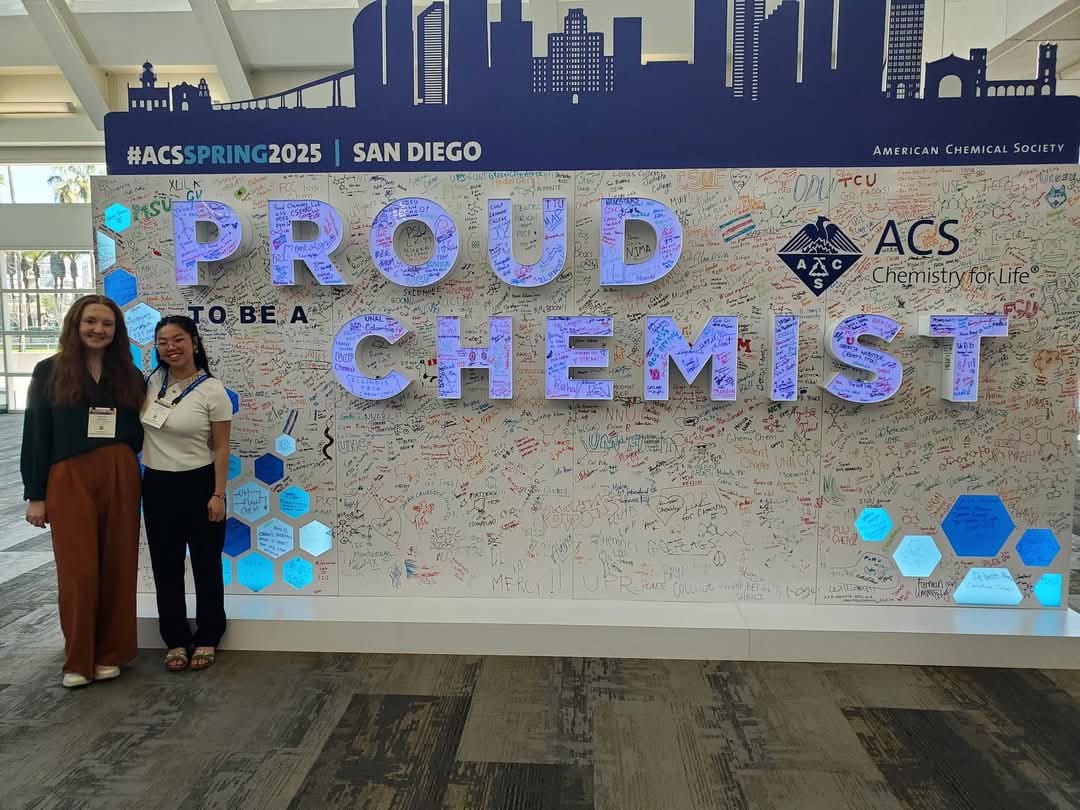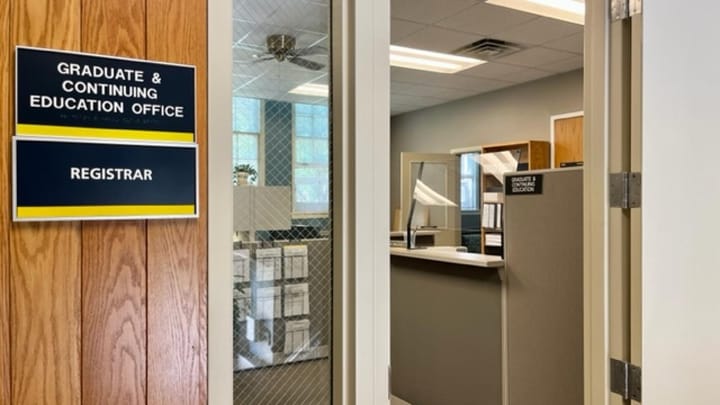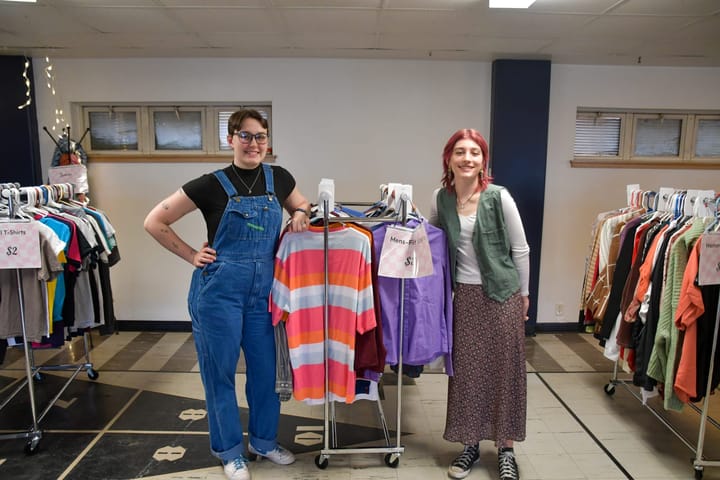Student chemists present research

Six students and four faculty members had the opportunity to showcase their research at the American Chemical Society’s (ACS) meeting in San Diego held from March 23-27, an event hosted by the world’s largest scientific society.
Senior Lily Ingalls worked closely with Assistant Professor of Chemistry Zachary Schulte, presenting findings on Metal-Organic Frameworks (MOFs). In particular, Ingalls was interested in its potential as a drug delivery system to treat gout, a disease that causes extreme pain as a result of salt crystal build-up in joints.
Gout is currently treated using an injection of allopurinol — a drug that stops salt build-up — and ibuprofen for pain management. Allopurinol is injected directly into afflicted joints, which can be an extremely painful process.
Reducing gout patients’ pain is Ingalls’ main concern. Using MOFs — porous, crystal-like molecules that Ingalls compares to small moving boxes — she hopes to incorporate allopurinol into the structure of MOFs and put ibuprofen inside.
“The main objective of my research was to see if we could incorporate both drugs into an MOF crystal to deliver both [allopurinol and ibuprofen] simultaneously,” Ingalls said.
If taken as an oral medication, both drugs could be administered in tandem, cutting out the need for injections.
ACS presenter and senior Ryan Schulte also focused his research on MOF potential, specifically lanthanide MOFs.
Lanthanides are the luminous elements on the second-to-bottom row of the periodic table. Ryan Schulte (no relation to Zachary Schulte) figured that if luminous lanthanides were incorporated into the box-like structure of MOFs, then anything that MOFs attached to would fluoresce.
The pair tested lanthanide MOFs’ ability to tag cancerous cells; however, they also needed to ensure that the lanthanide MOFs bind only to cancerous cells and bind tight enough that they cannot let go.
“We felt that we could design a material that could be both selective and tight in terms of what types of cells it could bind to,” Ryan Schulte said.
Like Ingalls and Ryan Schulte’s research on MOFs, senior Lin-Lin Elliott also explored cutting-edge materials. Her focus was on unique multilayered materials known as MAX phases — a material that combines properties of ceramics and metals. MAX phases conduct electricity and are resistant to heat and corrosion.
To create MAX phases, Elliott uses a process called free radical polymerization, which is more eco-friendly and energy-efficient than many other protocols.
“The main initial step was getting the solution of reagents to turn to gel, then heating it to high temperatures to achieve the final material,” Elliott said. “Essentially, this ‘sol-gel’ method uses less energy and [fewer] hazardous chemicals to make MAX phases.”
The potential of MAX phases inspired Elliott and her mentor, Jordan Sinclair of the Arizona State University Christina Birkel Lab. If Elliott and Sinclair could make the reaction work on a larger scale, then it could be used for infrastructure, which requires durable materials; the reaction could also be utilized for superconductors, which help electricity flow without resistance.
“If this sol-gel method can be used to make all these materials with amazing properties at relatively fast speeds, then a great advancement would take place in the industrial world,” Elliott said.
Ingalls, Ryan Schulte and Elliott did more than present at the ACS meeting; they were able to network with others in their field, too.
“Personally, I was able to talk with many professors about their research and the school they teach at,” Ingalls said. “I now have many different grad schools to look at that I hadn’t even thought about before.”
The conference also provides a platform for educators and other researchers to present their work to the scientific community and network with others in their field.
Professor of Chemistry Barrett Eichler presented an overview of his recent experience teaching abroad in Japan. He encouraged other professors to “deliver a class to any country.”
His presentation provided a guideline for planning study-abroad trips and highlighted the potential for such trips.
For both faculty members and students, the ACS meeting was a reminder of the power of the exchange of scientific knowledge and the importance of learning and growing together.
Eichler said that academic literature can be difficult to keep up with but that ACS events help provide insight into what is being done in the scientific community.
“We try to send as many people as possible, especially chemistry majors, because this is our field,” Eichler said. “This is what we do.”



